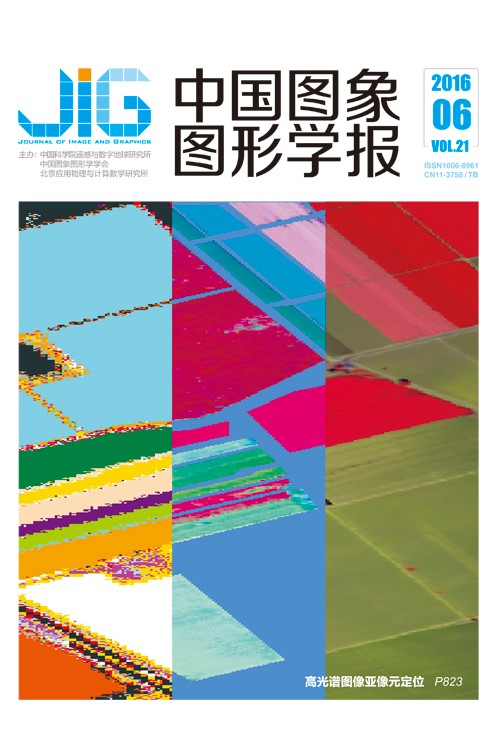
偏振编码方式的LDP人脸识别算法
摘 要
目的 局部二值模式(LBP)作为一种简单高效的纹理特征描述算子,被广泛地应用在纹理分类和人脸识别中。针对LBP及其改进算法局部导数模式(LDP)对噪声敏感的问题,以及仅利用局部像素差分的符号信息进行二值量化提取的纹理特征信息单一的问题,提出一种基于偏振编码方式的LDP改进算法。方法 首先,提取改进的LDP局部一阶差分信息;然后,构建人脸Stokes矢量图像;其次,按照偏振方位角的编码方式提取人脸图像的多方向纹理特征;最后,分块加权统计各子块的直方图向量得到最终的人脸特征向量。结果 在ORL和YALE两个人脸库中进行实验,得到97.4%,92.22%的正确识别率,所用时间与LBP和LDP算法相差无几。当样本数目较大时,复杂度低于LBP方法。在存在高斯噪声和椒盐噪声的情况下,分别得到了93.88%、86.27%和96.13%、84.71%的识别率,均高于LBP算法和LDP算法。结论 本文提出的偏振编码方式的人脸识别算法提取的人脸纹理特征更加丰富,即使在噪声干扰下仍具有较高的识别率,并且对于其他的纹理分类、目标识别也具有一定的参考价值。
关键词
LDP face recognition algorithm based on polarization encoding
Wei Li, Jiang Jianguo, Qi Meibin(School of Computer and Information, Hefei University of Technology, Hefei 230009, China) Abstract
Objective LBP has been widely applied in texture classification and face recognition as a kind of texture description operator for its simplicity and high efficiency. Given that the features that are extracted by the basic LBP and its variant-LDP operator are sensitive to noise, only the symbol information of the difference among local pixels is used for encoding. The binarization method is too simple to extract adequate texture feature information. Thus, this paper proposes a face recognition algorithm based on LDP through polarization encoding. Method First, the first-order derivatives along the 0°, 45°, 90°, and 135° directions are obtained. Second, the Stokes vector of the face image is built. Third, the texture feature of the face image is extracted from multiple directions. Fourth, following the encoding method of the azimuth of polarization, each sub-block histogram vector with varying weights is calculated according to the image entropy to constitute the final face feature vector via cascading. Result The experiments obtain correct recognition rates of 97.4% and 92.22% in the ORL and YALE face databases, respectively,the used time is almost the same with LBP and LDP algorithm. When the sample size is large, the complexity is lower than LBP method. In the presence of gaussian noise and salt and pepper noise, we respectively obtain correct recognition rates of 93.88%, 86.27% and 96.13%, 84.71%, they are much higher than LBP and LDP algorithm. Conclusion The proposed algorithm based on polarization encoding can extract more discriminating texture features and achieve a high face recognition rate even in the presense of noise. This algorithm also has some reference values for texture classification and object recognition in other fields.
Keywords
face recognition texture feature angle of polarization local derivative poattern local binary pattems histogram
|



 中国图象图形学报 │ 京ICP备05080539号-4 │ 本系统由
中国图象图形学报 │ 京ICP备05080539号-4 │ 本系统由